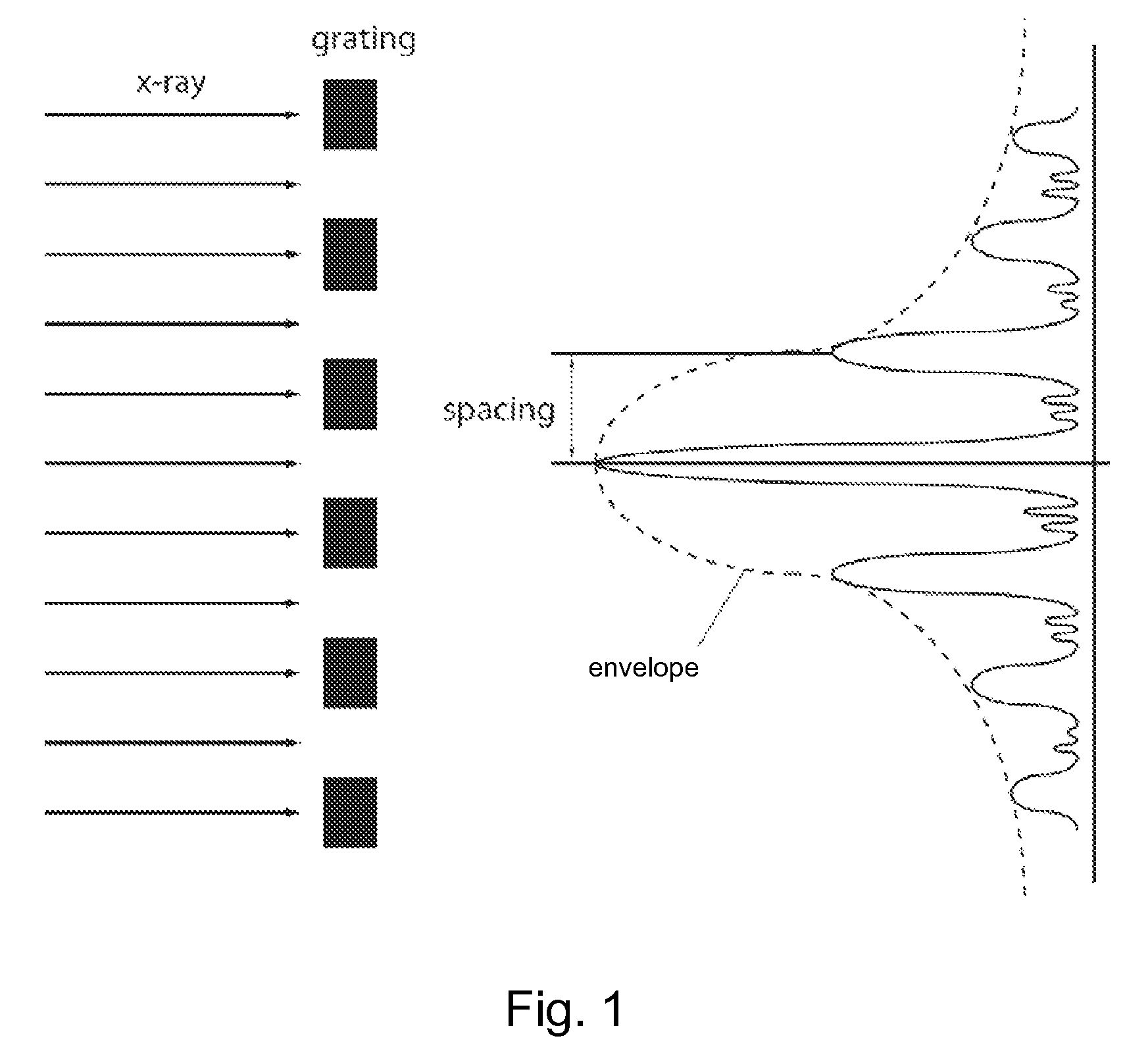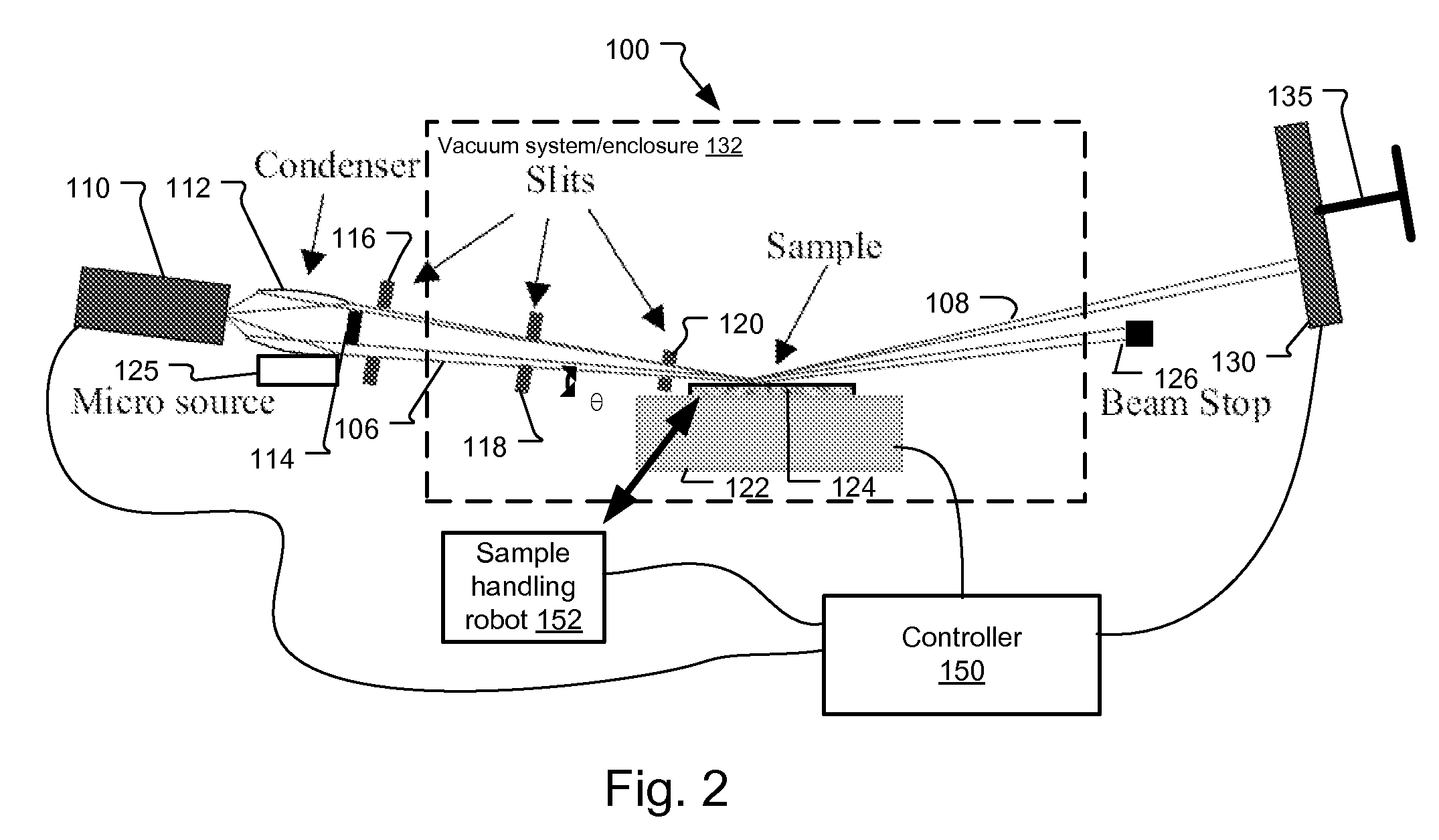CD-GISAXS system and method
a technology of cdgisax and system, applied in the field of cdgisaxs system and method, can solve the problems of large degradation of performance, device failure, or manufacturing yield, and limited application of afm, etc., and achieve the effect of ample potential and high measurement accuracy and sensitivity
- Summary
- Abstract
- Description
- Claims
- Application Information
AI Technical Summary
Benefits of technology
Problems solved by technology
Method used
Image
Examples
Embodiment Construction
[0022]Theoretical basis for longer wavelengths:
[0023]The three grand metrology challenges all require measuring critical dimensions in 3D of structures with a linear dimension 45 nanometers (nm) or smaller. The measurements are sometimes made within a small area, known as the wafer test pad that is usually located inside the so-called scribe-line along which the chips are separated. The area is typically less than 100 micrometers (μm) on a side but the side along the scribe-line direction can be longer if necessary. For in-line metrology applications, the structures within the test pad are typically repeated periodic structures.
[0024]The throughput of a CD-SAXS system is proportional to both the x-ray flux incident on the test pad and the scattering strength (fraction of the incident x-rays scattered) by the structure within the test pad. Therefore, to improve the throughput of CD-SAXS with the problem as defined above, one needs to improve and optimize both of those parameters.
[002...
PUM
| Property | Measurement | Unit |
|---|---|---|
| wavelength | aaaaa | aaaaa |
| wavelength | aaaaa | aaaaa |
| wavelength | aaaaa | aaaaa |
Abstract
Description
Claims
Application Information
 Login to View More
Login to View More - R&D
- Intellectual Property
- Life Sciences
- Materials
- Tech Scout
- Unparalleled Data Quality
- Higher Quality Content
- 60% Fewer Hallucinations
Browse by: Latest US Patents, China's latest patents, Technical Efficacy Thesaurus, Application Domain, Technology Topic, Popular Technical Reports.
© 2025 PatSnap. All rights reserved.Legal|Privacy policy|Modern Slavery Act Transparency Statement|Sitemap|About US| Contact US: help@patsnap.com



